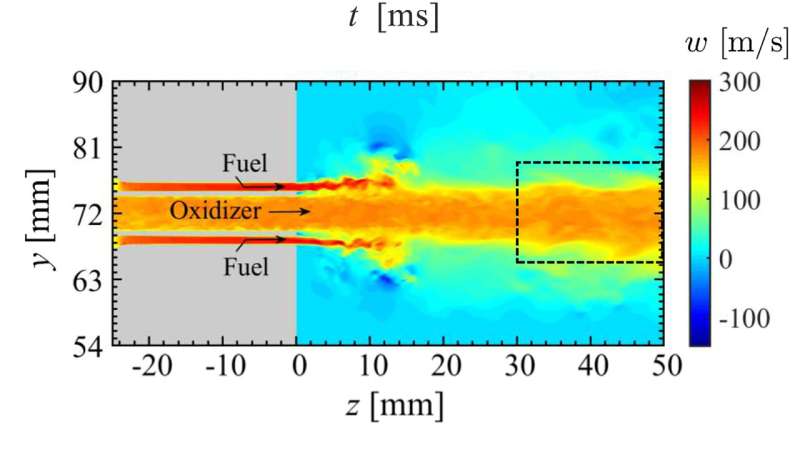
Combustion engines can develop high frequency oscillations, resulting in structural damage to the engines and unsafe operating conditions. an in depth understanding of the physical mechanism that causes these oscillations is required but has been lacking so far . In Physics of Fluids, research from the Tokyo University of Science and therefore the Japan Aerospace Exploration Agency clarifies the feedback processes that produce to those oscillations in rocket engines. The investigators studied simulated combustion events during a computational model of a rocket combustor. Their analysis involved sophisticated techniques, including symbolic dynamics and therefore the use of complex networks to know the transition into oscillatory behavior.
The symbolic dynamics techniques allowed the scientists to work out similarities in behavior between two variables that characterize the event. They found a relationship between fluctuations within the flow velocity of the fuel injector and fluctuations within the heat release rate of the combustor. A rocket uses injectors to deliver a fuel, typically hydrogen gas, H2, and an oxidizer, oxygen gas, O2, to a combustion chamber where ignition and subsequent combustion of the fuel occurs.
“Periodic contact of the unburnt H2/O2 mixture with high-temperature products of the H2 [and] air flame gives rise to significant fluctuations within the ignition location,” said author Hiroshi Gotoda. Fluctuations within the ignition location produce fluctuations within the heat release rate, which affects pressure fluctuations within the combustor.
“We found that the warmth release fluctuations and pressure fluctuations synchronize to every other,” said Gotoda. The product of the pressure and therefore the heat release rate fluctuations within the combustor is a crucial physical quantity for understanding the origin of oscillations. Regions where this product is bigger than zero correspond to sound pressure level sources that drive the oscillations. The investigators discovered power sources within the shear layer near the injector rim. These power sources would suddenly collapse and reemerge upstream during a periodic fashion, resulting in oscillations in combustion. “The repetition of the formation and collapse of thermo acoustic source clusters within the hydrodynamic shear layer region between the inner oxidizer and outer fuel jets plays a crucial role in driving oscillations,” said Gotoda.
The investigators believe their analysis method will cause a far better understanding of the damaging oscillations that sometimes arise in rocket engines and other combustors.

























